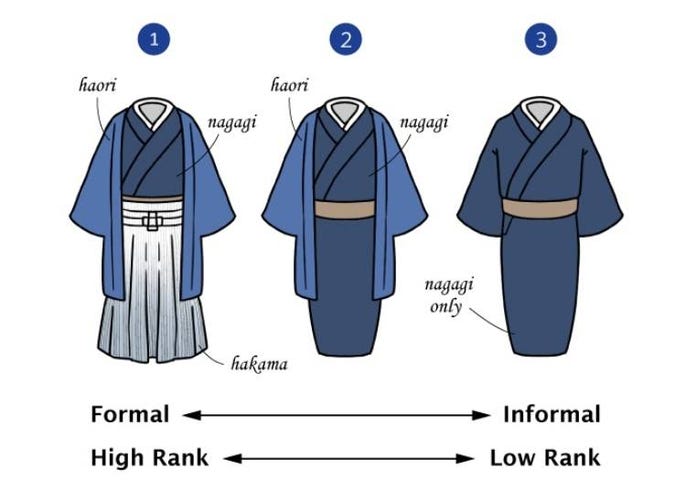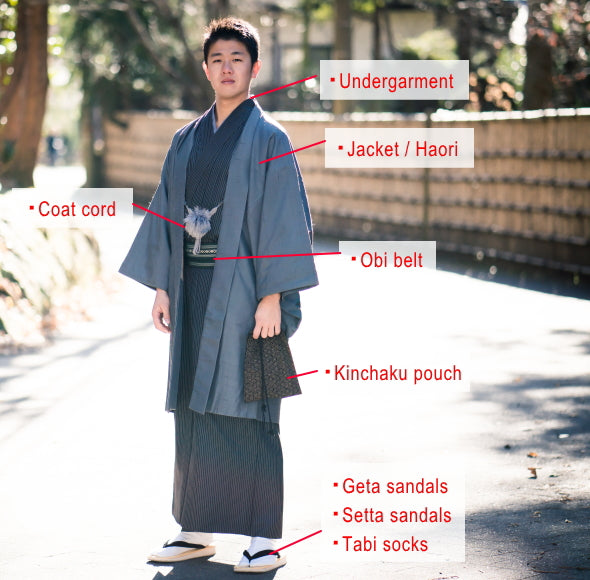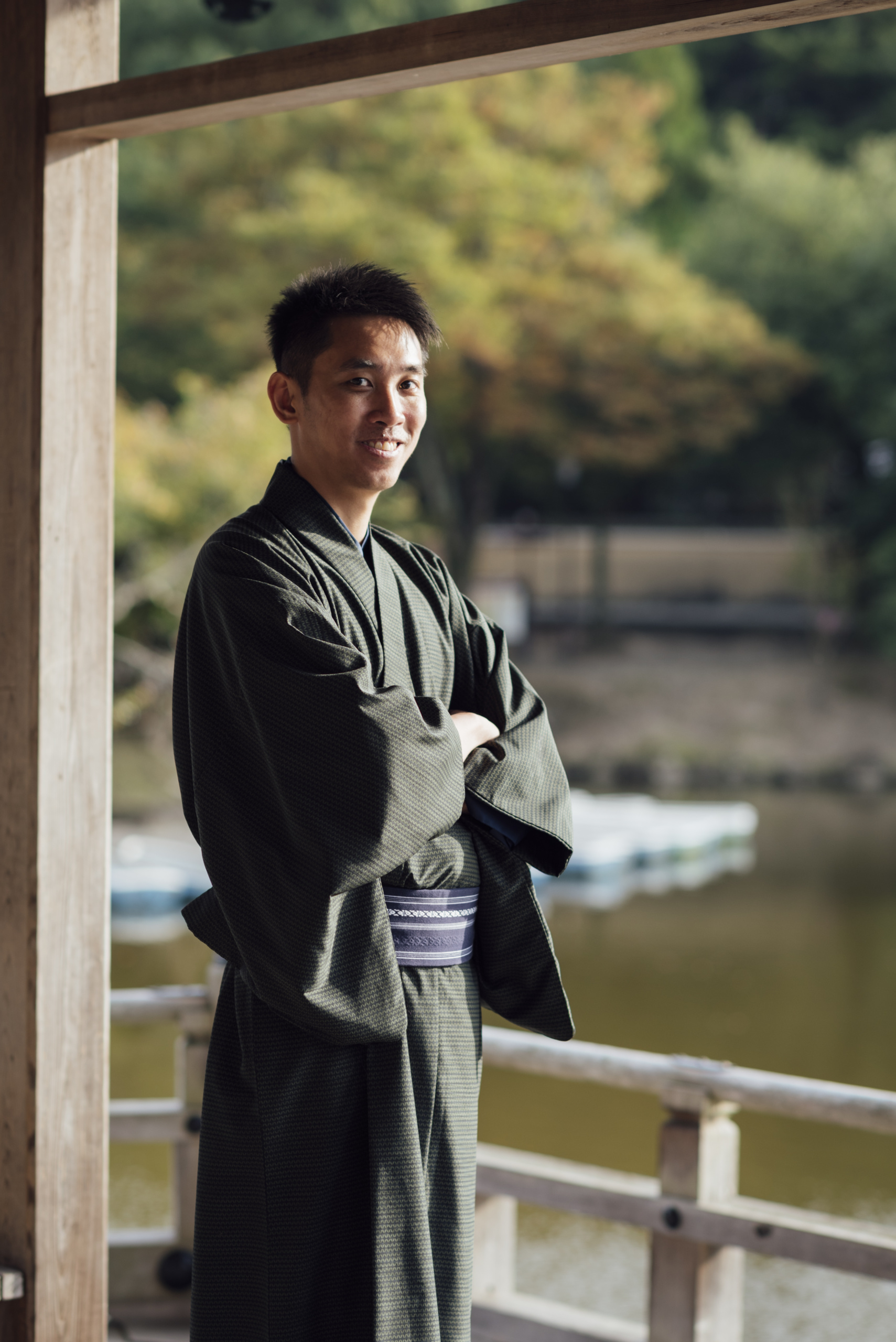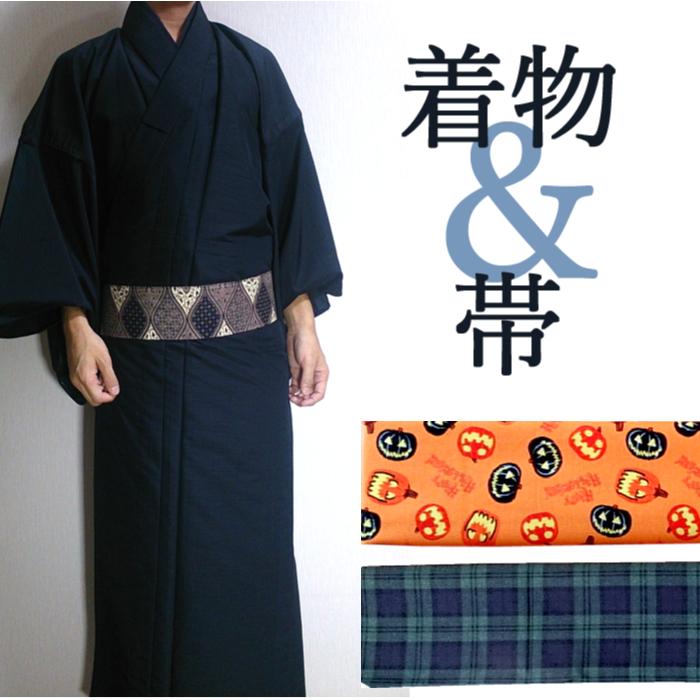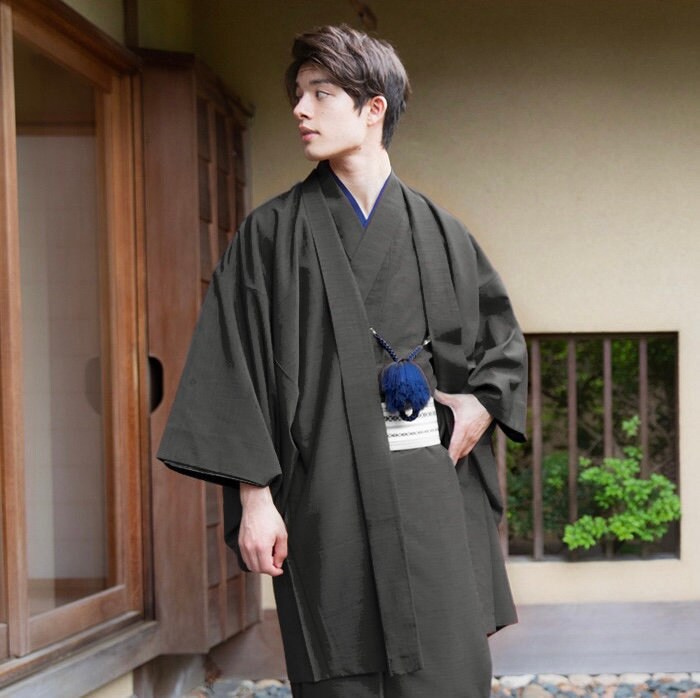ニュース What is a Nagagi kimono?. トピックに関する記事 – What’s the difference between a yukata and kimono
Yukata have shorter sleeves than kimono and don't have an inner lining like kimono do. Kimonos involve lots of accessories, such as a complicated obi sash, undergarment, tabi toe socks, and lacquered wooden sandals called zori. In cold weather, a haori jacket is worn over the kimono.The Yukata is a casual version of the kimono. It is a robe usually made of cotton or synthetic fabric, wrapped around the body and fastened with a sash (obi). Yukata literally means “bathing cloth”, and it was originally intended to be just that.Padding's important to make your kimono look perfect
Maybe you've seen something that looks like a pillow or bag at the back of a kimono. That's used to help tie the obi properly. It's not there for storage, or to sleep on! Sometimes, people carry things inside the kimono's long hanging sleeves instead.
What is a male kimono calledThe most common type of men's kimono you'll see is the montsuki (紋付). It's a typically black, often silk-made kimono worn over traditional Japanese clothing known as hakama. It's actually more common to see men in a yukata than a kimono.
Is it OK to wear a kimono if you’re not Japanese
It's not only allowed, it's encouraged. It is a way to show appreciation for Japanese culture. Many establishments in larger cities like Tokyo and Kyoto rent kimonos to non-Japanese visitors – it's a way to enhance your visit and soak up the culture even more.Yes, foreigners are generally allowed to wear kimonos and yukata in Japan, and it can be a unique and culturally enriching experience to do so. Kimonos and yukata are traditional Japanese garments, and many Japanese people appreciate it when visitors show an interest in their culture by wearing these clothes.
What is the most expensive type of kimono
junihitoe
The most expensive kimono is the junihitoe. The Jūnihitoe can be worn during a wedding ceremony.
To get straight to the point: As long as a kimono is worn out of respect and appreciation of the Japanese culture, it's perfectly fine to wear a kimono as a foreigner.
Is it OK to sleep in a kimono
In the old days, the Japanese used to wear kimono even during summer. Can you imagine how uncomfortable it must be to sleep in a kimono! Traditionally, yukata was worn for bathes and thereafter to sleep. In modern days, habits and culture have evolved such that yukata is often just worn during summer festivals.Undergarment like bras don't exactly match the kimono wear. Bras are great for supporting your bust and keeping it up, but they will also damage the shape of the kimono. A bra can even open the collar of a kimono wider over time.Not only that, but I've seen Japanese guys both wear female kimono and female kimono converted into male style kimono and no one really seemed to bat an eye. Suffice to say I don't think it'll be a problem if you have the confidence to pull it off.
Men can ABSOLUTELY wear kimono robes. Kimono inspired fashion is not limited by gender.
Can you wear red in JapanThe color red, or aka, is very popular in Japan. Many shrines and temples are red, and this fact has a very ancient meaning. Since time immemorial the color red was seen as a way to scare away evil spirits.
Is it OK for foreigners to wear yukataYes it is. I know some people might argue that this is cultural appropriation, but in my experience if a non-Japanese person wears a yukata (or even a full kimono) with respect, Japanese people wiIl actually appreciate it. The fact that you're wearing Japanese clothing is taken as a compliment.
How do you wear a yukata respectfully
Stay classy. Keep the top of the yukata tightly closed around your neck and chest. Avoid embarrassing exposure, keep the bottom of the yukata tightly wrapped. If it's windy keep one hand on your yukata's opening.
The cost of a real kimono in Japan can vary widely depending on several factors, including the type of kimono, the quality of the materials, the craftsmanship, and whether it's new or second-hand. On average, a good quality, new kimono can cost anywhere from 30,000 yen to 100,000 yen or more.Yukatas are an inexpensive alternative to kimonos, especially silk ones, for individuals who don't want to break the budget. They are an excellent approach to experiment in fashion since they are inexpensive and not as formal as a kimono.No, the Japanese enjoy you enjoying their culture. There are more than a few shops which rent kimono to foreigners, and other Japanese, in places like Kyoto.

